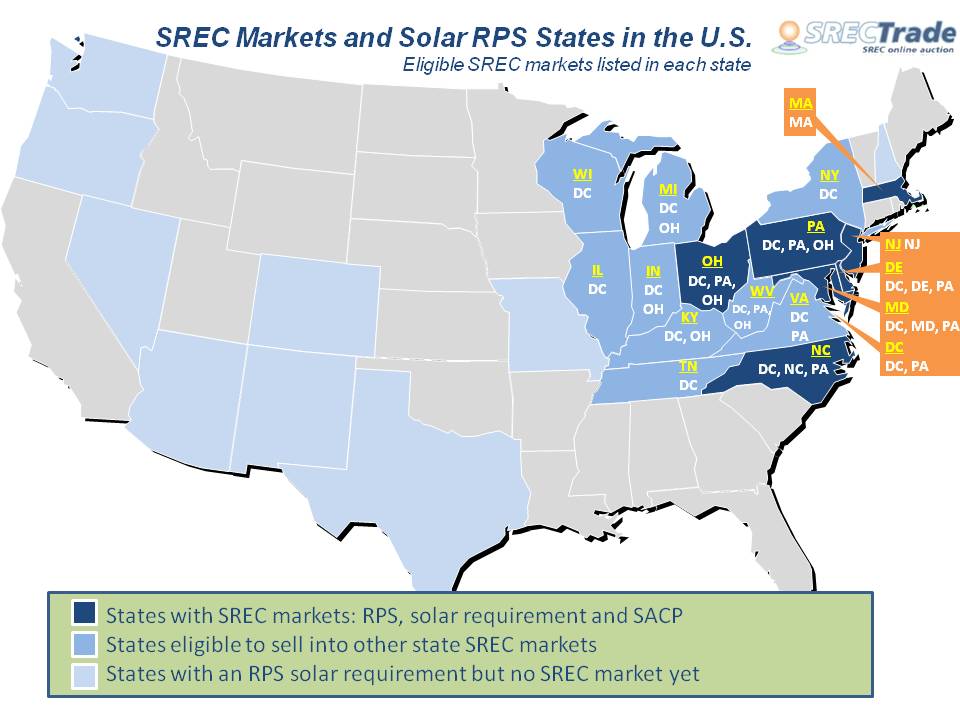The Council of the District of Columbia and the city’s Mayor signed into law the Distributed Generation Amendment Act of 2011. SRECTrade closely watched this legislation as it evolved over the last 7 months. Our most recent blog on the subject is here. The Act ultimately focuses on providing a sustainable SREC market for the residents of Washington DC while containing the potential cost to ratepayers. The amendment increases the RPS solar requirements and closes the District’s boarders from out-of-district sited systems. The affect on the market is demonstrated in our Capacity Update of systems eligible to create DC SRECs moving forward.
This week, the PJM tracking registry (PJM GATS) is undergoing the process of de-certifying systems that were once eligible under the previous Washington DC RPS law. As per the new legislation, all non-Washington DC sited systems that were approved after January 31, 2011 by the DC Public Service Commission are no longer eligible to sell SRECs in the DC market. This cutoff date is clearly displayed by a customer’s DC State Certification Number; any certification number beginning “DC-10…-SUN-I” was certified before January 31, 2011, while any certification number beginning “DC-11….-SUN-I” was certified after that date.
What does this mean for the market?
While this law is not likely to cause DC SREC prices to rebound immediately to the level that was seen in 2010 (due to the fact that buyers have likely accumulated extra SRECs throughout the early part of this year, along with any forward contracts that were in place before the law was implemented), this law is an important step to alleviating the oversupply that has depressed DC SREC prices.
What does this mean for facilities certified after January 31, 2011?
Any facility not located within Washington DC with the state certification number beginning “DC-11…” has had their certification number de-activated. The facility is no longer eligible to generate future SRECs in the DC market, and any SRECs they have already created have lost their eligibility for the DC SREC market.
– If your facility falls under this category, and is already eligible to sell SRECs in another state, you will not see any disruption in your account except that you are no longer eligible for the DC market.
– If your facility is eligible to be certified for another SREC market, but you were only certified in DC, you can apply for certification in another state market. Please see this chart for more information on your eligibility.
– If your facility was originally only eligible for DC (i.e. your system is located in WI, NY, NC(non-Dominion Power territory) or you had a Solar Thermal system not located within Washington DC), PJM GATS will be listing your facility as “inactive”. Any SRECs you have created will not be eligible for sale, and you will not create future SRECs unless another market opens that allows your facility to be certified. Currently, solar facilities in this scenario are only eligible in the NC SREC market – but due to extremely low pricing in the oversaturated NC market, this option is not very viable for solar owners.
SRECTrade will continue to post opportunities for cross-listing SRECs in other state markets.
Tweet


